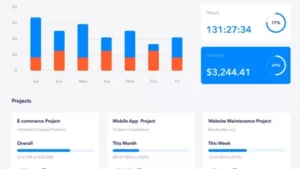Have you ever seen a study that shows a massive upward curve evidencing the vast improvement seen in the study, only then to notice that the scale on one of the axes is not quite right? If the axes were in the appropriate unit of measure the study would actually show a minor or negligible improvement. Unfortunately, the stark truth is that you can make data say anything you want if you try hard enough. You can change the visualisation, the axes, heavily weight certain criteria, interpret an element as critical. And the starker truth is that not all of this misrepresentation or misinterpretation is nefarious or even deliberate. Often it is actually our bias or preconceived view about what the answer is or isn’t that dictates how we interpret data and the patterns we recognise.
The ability to suspend disbelief in what is possible, and to shelve preconceptions about how things will be, is critical to innovation. It is also critical to data analysis. When we are analysing data we need to be very aware of our biases, prejudices and preconceived notions – whether or not we think they are relevant to the current data or not. If we interpret data through the lens of our world view, we are likely to miss the most valuable aspects of the data narrative.
We were recently working with a client who was certain that their workforce data was very simple. They had undergone a period of change, there had been a little bit of angst, and now things were more or less settling down. Their view was that their workforce was fairly straightforward, and as such they expected the workforce data to paint a straightforward narrative. When they received the results of their Staff Survey, they believed the results were simple.
This was not the case. Through the analysis our team performed, with distance from the expectations of the organisation and keen awareness of their own biases and prejudices, it became very clear that the workforce lacked clarity about their roles and the roles of those around them. Whilst they believed strongly in the intent of the organisation, they were not at all clear on how this was to be achieved. This is strategically crucial information. However, when the data is viewed through preconceived notions it is easy to interpret the same data set as indicating that the workforce was strongly committed to the organisation and purpose.
Another pitfall in data analysis can be to view information in silos, ignoring the whole context in which it occurs. For example, if you were to solely measure lost time injuries in a workplace as the measure of safety, you may be overlooking the fact that injury frequency is high, however people are unproductively kept on site to avoid triggering the dreaded LTI count. Equally, a 360 Degree Feedback review might show a particular manager or leader to be incredibly popular and highly regarded by others in the organisation. However, if the results of their team are lack lustre, this may actually not be a positive thing for the business.
It is through the comparison and correlation of data that we see value, and a balanced view of the data narrative. It is critical to ensure that we are collecting and comparing data of multiple types, from multiple sources in order to ensure that we are able to properly interpret the reality of the circumstance, and make strategic decisions.
The Wrap Up
Most businesses are now utilising data analysis on some level in their organisation. To ensure you get bang for buck from these activities, ensure you do the following:
- Ensure the people analysing the data are arms-length from the subject matter.
- Train the data analysts in recognising and isolating their own prejudices and biases, in order to ensure the data analysis is not effected.
- View data holistically – not in a silo. You must interpret the data within the context in which it occurs.
- Suspend disbelief – anything is possible, and you need to be open to recognising unexpected patterns to get ahead of the competition.


